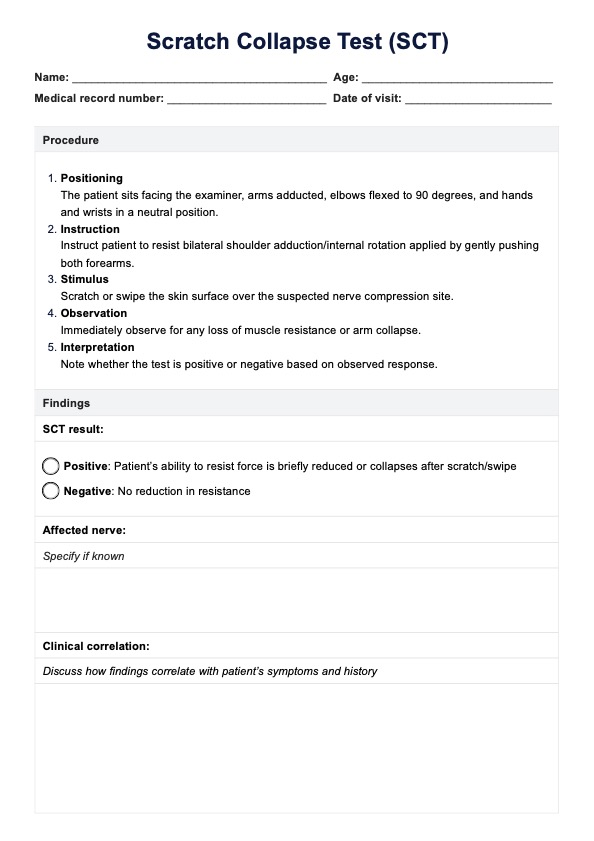During the Scratch Collapse Test (SCT), the patient stands facing the examiner with elbows flexed at 90 degrees. The examiner applies a scratch or swipe over the skin covering the nerve suspected of compression while the patient maintains resistance. A positive test occurs if the patient involuntarily loses resistance, indicating nerve dysfunction.

Scratch Collapse Test (SCT)
Learn about the Scratch Collapse Test (SCT), a clinical assessment for nerve compression syndromes like carpal tunnel and cubital tunnel syndrome.
Use Template
Scratch Collapse Test (SCT) Template
Commonly asked questions
The Scratch Collapse Test (SCT) is primarily used to diagnose carpal tunnel syndrome, cubital tunnel syndrome, and other peripheral nerve entrapment syndromes like ulnar nerve compression.
While the Scratch Collapse Test (SCT) shows promise as a diagnostic tool, its reliability can vary. It is recommended as an adjunct to other clinical assessments and diagnostic tests for more accurate evaluation.
EHR and practice management software
Get started for free
*No credit card required
Free
$0/usd
Unlimited clients
Telehealth
1GB of storage
Client portal text
Automated billing and online payments











